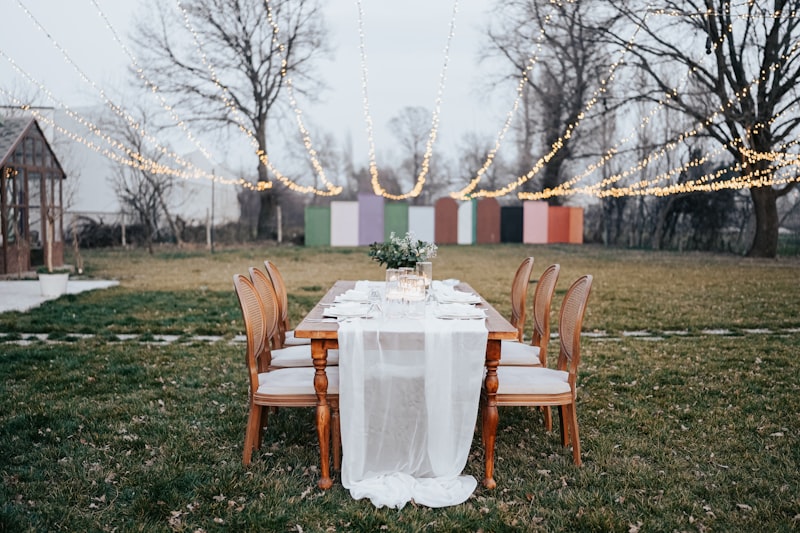Nature's Influence on Bridal Color Choices: How the Environment Shapes Wedding Aesthetics
Nature's Influence on Bridal Color Choices: How the Environment Shapes Wedding Aesthetics
Understanding the Connection Between Nature and Bridal Colors
When it comes to planning a wedding, couples often grapple with an array of decisions, one of the most important being the color palette. The colors chosen for a wedding not only reflect personal style and preferences but also resonate deeply with nature. Indeed, nature’s influence on bridal color choices is profound and multifaceted. This article explores how the environment impacts wedding color selections, the symbolism behind these colors, and offers insightful suggestions to couples navigating their own bridal palettes.
The Charm of Natural Colors
Bridal color choices are often inspired by elements from the natural world. From lush greenery to vibrant blooms and rich earth tones, nature provides a vast array of colors that can be harmoniously incorporated into a wedding. Here are some key aspects of how nature influences these choices:
Seasonal Inspiration
The change of seasons plays a crucial role in shaping bridal color palettes. Couples marrying in spring may opt for soft pastels, symbolizing renewal and growth, while fall weddings might embrace warm, earthy tones like burnt orange, deep reds, and rich golds, reflecting the changing leaves. Below is a table summarizing seasonal color choices:
| Season | Color Palette |
| Spring | Pastels: Lavender, Blush, Mint Green |
| Summer | Brights: Coral, Aqua, Sunflower Yellow |
| Fall | Warm Earth Tones: Burgundy, Mustard, Olive |
| Winter | Jewel Tones: Deep Blue, Emerald, Silver |
Symbolism of Colors in Nature
Each color comes with its own set of meanings, many of which are drawn from natural symbols. For instance:
- Green: A symbol of fertility and growth, often used in eco-friendly weddings.
- Blue: Represents tranquility and peace; often inspired by the sky and oceans.
- Red: A color of love and passion, reminiscent of blooming flowers.

Inherent Cultural Influences
Nature’s influence on bridal color choices also extends to cultural practices. Different cultures interpret natural colors differently, shaping color preferences based on traditions. For instance, in many Eastern cultures, vibrant red symbolizes prosperity and happiness, leading to its frequent use in weddings. Meanwhile, Western weddings may feature white as a primary color, representing purity and new beginnings, although this can vary depending on the couple's preferences and family traditions.
Adventure and Destination Weddings
For couples opting for destination weddings, the surrounding environment heavily informs their color decisions. A beach wedding might evoke shades of turquoise and sandy beige, while a mountain wedding could inspire deep greens and rich browns, mirroring the landscape. Couples often choose colors that blend naturally with their surroundings to create a cohesive aesthetic. Below is a table highlighting popular destination wedding themes and their corresponding color palettes:
| Destination | Color Palette |
| Beach | Turquoise, Coral, White |
| Forest | Deep Green, Brown, Gold |
| Desert | Warm Terracotta, Dusty Rose, Cream |
| Cityscape | Metallics, Bold Colors, Black and White |
Contemporary Trends Influenced by Nature
Recent trends in wedding planning reflect a growing awareness of natural elements. Eco-conscious couples are now prioritizing sustainability, choosing color palettes and materials that honor the environment. This might include:
- Earthy, natural tones that blend with rustic settings.
- Flower arrangements that feature locally sourced, seasonal blooms.
- Use of organic fabric for dresses and décor.
Choosing the Right Colors: Practical Tips
Selecting the perfect colors for a bridal palette can feel overwhelming. Here are some practical tips to help couples make informed choices:
- Start with Inspiration: Look for color inspiration in nature by taking walks in parks or gardens, observing changing seasons, or even visiting botanical gardens.
- Consider the Venue: Analyze your wedding venue's surroundings; choose colors that harmonize with the environment.
- Personal Significance: Reflect on colors that hold personal meaning or have sentimental connections. Incorporating meaningful colors can add depth to the overall wedding aesthetic.
- Test Samples: Experiment with color swatches in natural light to see how they interact. This can dramatically change their appearance, helping you choose the best combinations.
Conclusion: Embracing Nature Through Color
Nature’s influence on bridal color choices is undeniable and serves as a reminder to couples of the beauty that surrounds them—an inspiration that is both timeless and meaningful. When planning your wedding colors, take the time to consider seasonal palettes, cultural influences, and personal connections to color. Remember, the colors you choose will not only set the mood for your special day but will also weave a narrative of who you are as a couple. Embrace the hues of the earth, cherish the influences of nature, and let them guide you in creating a breathtaking wedding experience.
As you embark on your wedding planning journey, remember that every detail counts—from the flowers to the attire and décor. Consider consulting with professionals who can help you marry your vision with the beauty of the natural world. Above all, prioritize what resonates with you and your partner, creating a celebration that reflects your unique love story.
